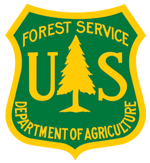Literature
by
Jean Brennan
—
last modified
May 14, 2019 07:55 PM
Folder content from the GoogleDocs site for the NatureServe CCV WorkGroup.
- Aitken et al 2008 climate change and trees.pdf — by .. — last modified May 14, 2019 07:55 PM
- ..
- Anderson_Mark_C._Ferree_2010_climate change.pdf — by .. — last modified May 14, 2019 07:55 PM
- ..
- Bagne et al. 2011. assessing vulnerability of species to climate change. USDA Forest Service.pdf — by .. — last modified May 14, 2019 07:55 PM
- ..
- Baselga 2009 climate change community modeling.pdf — by .. — last modified May 14, 2019 07:55 PM
- ..
- Botkin et al 2007 forecasting effects of global warming_climate change.pdf — by .. — last modified May 14, 2019 07:55 PM
- ..
- Climate Change Vulnerability Assessment of Rare Plants in California.pdf — by .. — last modified May 14, 2019 07:55 PM
- ..
- Climate Projections FAQrmrs_gtr277.pdf — by .. — last modified May 14, 2019 07:55 PM
- ..
- Coe et al_2012 climate change vulnerability assessment.pdf — by .. — last modified May 14, 2019 07:55 PM
- ..
- Comer et al_2012_NatureServe_HCCVI_Appendix 2.pdf — by .. — last modified May 14, 2019 07:55 PM
- ..
- Comer et al_2012_NatureServe_HCCVI_Appendix 3.pdf — by .. — last modified May 14, 2019 07:55 PM
- ..
- Comer et al_2012_NatureServe_HCCVI_Report.pdf — by .. — last modified May 14, 2019 07:55 PM
- ..
- Dawson et al 2011_climate change-adaptive capacity.pdf — by .. — last modified May 14, 2019 07:55 PM
- ..
- DeWan et al 2010_Climate Change_NC.pdf — by .. — last modified May 14, 2019 07:55 PM
- ..
- Diffenbaugh et al 2008 Climate change hotspots.pdf — by .. — last modified May 14, 2019 07:56 PM
- ..
- Enquist and Gori 2008 NM TNC report_climate change(2).pdf — by .. — last modified May 14, 2019 07:56 PM
- ..
- Enquist and Gori 2008 NM TNC report_climate change.pdf — by .. — last modified May 14, 2019 07:56 PM
- ..
- EPA_MBP_2012_VULNERABILITY_ASSESSESSMENTS_.CLIMATE CHANGEpdf.pdf — by .. — last modified May 14, 2019 07:56 PM
- ..
- Flaxman and Vargas-Moreno_2011_Considering Climate Change-WildlifeActionPlan.pdf — by .. — last modified May 14, 2019 07:56 PM
- ..
- Galbraith H_JPrice_2009 EPA VA framework cc end spc_climate change.pdf — by .. — last modified May 14, 2019 07:56 PM
- ..
- Galbraith habitat vulnerability assessment_draft.doc — by .. — last modified May 14, 2019 07:56 PM
- ..
- Gardali et al 2012_CCVA CA Birds_PLOSOne2012.pdf — by .. — last modified May 14, 2019 07:56 PM
- ..
- Glick et al. 2011_NWFScanningtheConservationHorizon_climate change_vulnerability assessment.pdf — by .. — last modified May 14, 2019 07:56 PM
- ..
- Gonzalez et al 2010_climate_change.pdf — by .. — last modified May 14, 2019 07:56 PM
- ..
- Ibanez et al 2008_climate change_migrant species.pdf — by .. — last modified May 14, 2019 07:56 PM
- ..
- Iverson and Prasad_2001_predicted forest type change_climate change.pdf — by .. — last modified May 14, 2019 07:56 PM
- ..
- Iverson et al. 2001. Changes in Tree Species Richness and Forest Community Climate Change.pdf — by .. — last modified May 14, 2019 07:56 PM
- ..
- Iverson_et al_2004_climate change_tree migration.pdf — by .. — last modified May 14, 2019 07:56 PM
- ..
- Kittel_etal_2010_Climate vulnerability of ecosystems and landscapes on Alaska’s North Slope_climate change.pdf — by .. — last modified May 14, 2019 07:56 PM
- ..
- Loarieetal2009_Nature_Velocityof_Climate Change.pdf — by .. — last modified May 14, 2019 07:56 PM
- ..
- McKenney et al 2007 N Am trees_climate change.pdf — by .. — last modified May 14, 2019 07:56 PM
- ..
- McLachlan et al_2005_tree migration_climate change.2005.pdf — by .. — last modified May 14, 2019 07:56 PM
- ..
- North Carolina Natural Heritage Program_NCDENR_Climate_Sensitive_Ecosystem_Assessment_summary.pdf — by .. — last modified May 14, 2019 07:56 PM
- ..
- North Carolina Natural Heritage Program_NCDENR_Spruce_Fir_Forests_CC_Assessment.pdf — by .. — last modified May 14, 2019 07:56 PM
- ..
- Potter and Crane 2010_climate change_Appalachians_genetic-risk-assessment-system-description-120610.pdf — by .. — last modified May 14, 2019 07:56 PM
- ..
- Rowlandetal_2011_cc_impacts_guide.pdf — by .. — last modified May 14, 2019 07:56 PM
- ..
- Schwartz et al_2006_extinctions climate change.pdf — by .. — last modified May 14, 2019 07:56 PM
- ..
- Swanston et al. 2011_ecosystem vulnerability climate change.pdf — by .. — last modified May 14, 2019 07:56 PM
- ..
- Tang&Beckage.2010.forest distribution climate change.pdf — by .. — last modified May 14, 2019 07:56 PM
- ..
- trumbo-etal_2010_climate change_trout_Virginia.pdf — by .. — last modified May 14, 2019 07:56 PM
- ..
- whitman et al. 2010 climate change exposure ME.pdf — by .. — last modified May 14, 2019 07:56 PM
- ..
- Williams et al 2008 vulnerability climate change.pdf — by .. — last modified May 14, 2019 07:56 PM
- ..
- Beane_2010_WV_red spruce_climate change.pdf — by lesley_sneddon — last modified May 14, 2019 07:56 PM
- environemental and site-specific variables to model current and future distribution of red spruce forest habitat in WV
- Determining suitable locations for seed transfer under climate change: A global quantitative method. — by lesley_sneddon — last modified May 14, 2019 07:56 PM
- Changing climate conditions will complicate efforts to match seed sources with the environments to which they are best adapted. Tree species distributions may have to shift to match new environmental conditions, potentially requiring the establishment of some species entirely outside of their current distributions to thrive. Even within the portions of tree species ranges that remain generally suitable for the species, local populations may not be well-adapted to altered local conditions. To assist efforts to restore forests and to maximize forest productivity in the face of climate change, we developed a set of 30,000 quantitatively defined seed transfer ‘‘ecoregions’’ across the globe.
- Climate Projections FAQ — by lesley_sneddon — last modified May 14, 2019 07:56 PM
- USFS guidance on use of downscaled climate data
- Do geographic distribution, niche property and life form explain plants' vulnerability to global change? — by lesley_sneddon — last modified May 14, 2019 07:56 PM
- Author's abstract: We modelled the future distribution in 2050 of 975 endemic plant species in southern Africa distributed among seven life forms, including new methodological insights improving the accuracy and ecological realism of predictions of global changes studies by: (i) using only endemic species as a way to capture the full realized niche of species, (ii) considering the direct impact of human pressure on landscape and biodiversity jointly with climate, and (iii) taking species' migration into account. Our analysis shows important promises for predicting the impacts of climate change in conjunction with land transformation. We have shown that the endemic flora of Southern Africa on average decreases with 41% in species richness among habitats and with 39% on species distribution range for the most optimistic scenario. We also compared the patterns of species' sensitivity with global change across life forms, using ecological and geographic characteristics of species. We demonstrate here that species and life form vulnerability to global changes can be partly explained according to species' (i) geographical distribution along climatic and biogeographic gradients, like climate anomalies, (ii) niche breadth or (iii) proximity to barrier preventing migration. Our results confirm that the sensitivity of a given species to global environmental changes depends upon its geographical distribution and ecological proprieties, and makes it possible to estimate a priori its potential sensitivity to these changes.
- Clark, J.S. et al. Climate change vulnerability of forest biodiversity: climate and competition tracking of demographic rates — by lesley_sneddon — last modified May 14, 2019 07:56 PM
- Author's Abstract Forest responses to climate change will depend on demographic impacts in the context of competition. Current models used to predict species responses, termed climate envelope models (CEMs), are controversial, because (i) calibration and prediction are based on correlations in space (CIS) between species abundance and climate, rather than responses to climate change over time (COT), and (ii) they omit competition. To determine the relative importance of COT, CIS, and competition for light, we applied a longitudinal analysis of 27 000 individual trees over 6–18 years subjected to experimental and natural variation in risk factors. Sensitivities and climate and resource tracking identify which species are vulnerable to these risk factors and in what ways. Results show that responses to COT differ from those predicted based on CIS. The most important impact is the effect of spring temperature on fecundity, rather than any input variable on growth or survival. Of secondary importance is growing season moisture. Species in the genera Pinus, Ulmus, Magnolia, and Fagus are particularly vulnerable to climate variation. However, the effect of competition on growth and mortality risk exceeds the effects of climate variation in space or time for most species. Because sensitivities to COT and competition are larger than CIS, current models miss the most important effects. By directly comparing sensitivity to climate in time and space, together with competition, the approach identifies which species are sensitive to climate change and why, including the heretofore overlooked impact on fecundity.
























